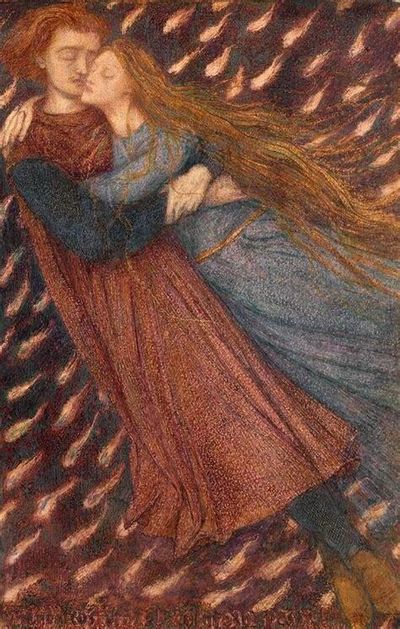Christina Rossetti and the Pre-Raphaelites

Christina Rossetti was involved with The Pre-Raphaelites, largely because her artist brother, Dante Gabriel, founded the movement in 1848 with John Millais and William Holman Hunt.
But who were The Pre-Raphaelites?
Artists in search of a new and fresh direction in their work? Bohemian rebels who were the “rock stars” of their day with their unconventional lifestyles? Innovators who rejected the academic art rules & regulations of their time and wanted to revive the detailed and vibrant color, line, and texture of early Renaissance painting?
All of these aspects . . . and more
Mostly, they were dissatisfied with the industrialization and commercialism of their era and sought to create art that hearkened back to an era "before Raphael." They often found inspiration in literature, poetry, and mythology, such as the Arthurian legends, Dante and Beatrice, and Greek goddesses; and, their art frequently depicted romantic and idealized scenes. Certainly, not everyone approved. When some people saw their paintings at early exhibitions, they were taken aback at the bright colors and provocative themes. In 1850, Charles Dickens described Millais’s depiction of the Virgin Mary in Christ in the House of His Parents as a degenerate type, one who was ‘horrible in her ugliness’. He wasn't alone.
In terms of their bohemian habits, things grow even more interesting: the Pre-Raphaelites often lived edgy lives for their time, characterized by a rejection of traditional mores and a pursuit of personal freedom (illicit relationships, wombats, and all-night parties). In their non-conformist approach to life, they often worked and resided in communal spaces, embracing an open-minded attitude towards sexuality and relationships. Many of the artists had liaisons with their models; some, like Dante Gabriel Rossetti, married his muse and lover, Elizabeth Siddal. For the most part, they lived and loved with a bold, daring disregard for Victorian values.
Christina Rossetti was on the “fringes” of the movement with her poetry, but she was influenced, especially in her early verse, to write wholly new and different poems, like “Goblin Market,” a sensual, almost subversive, fairy tale about two sisters who have to battle temptation and embrace sacrifice after encountering evil goblin merchants. Needless to say, the women win.
Christina may not have been a bohemian in her life—yet she was in her creativity.